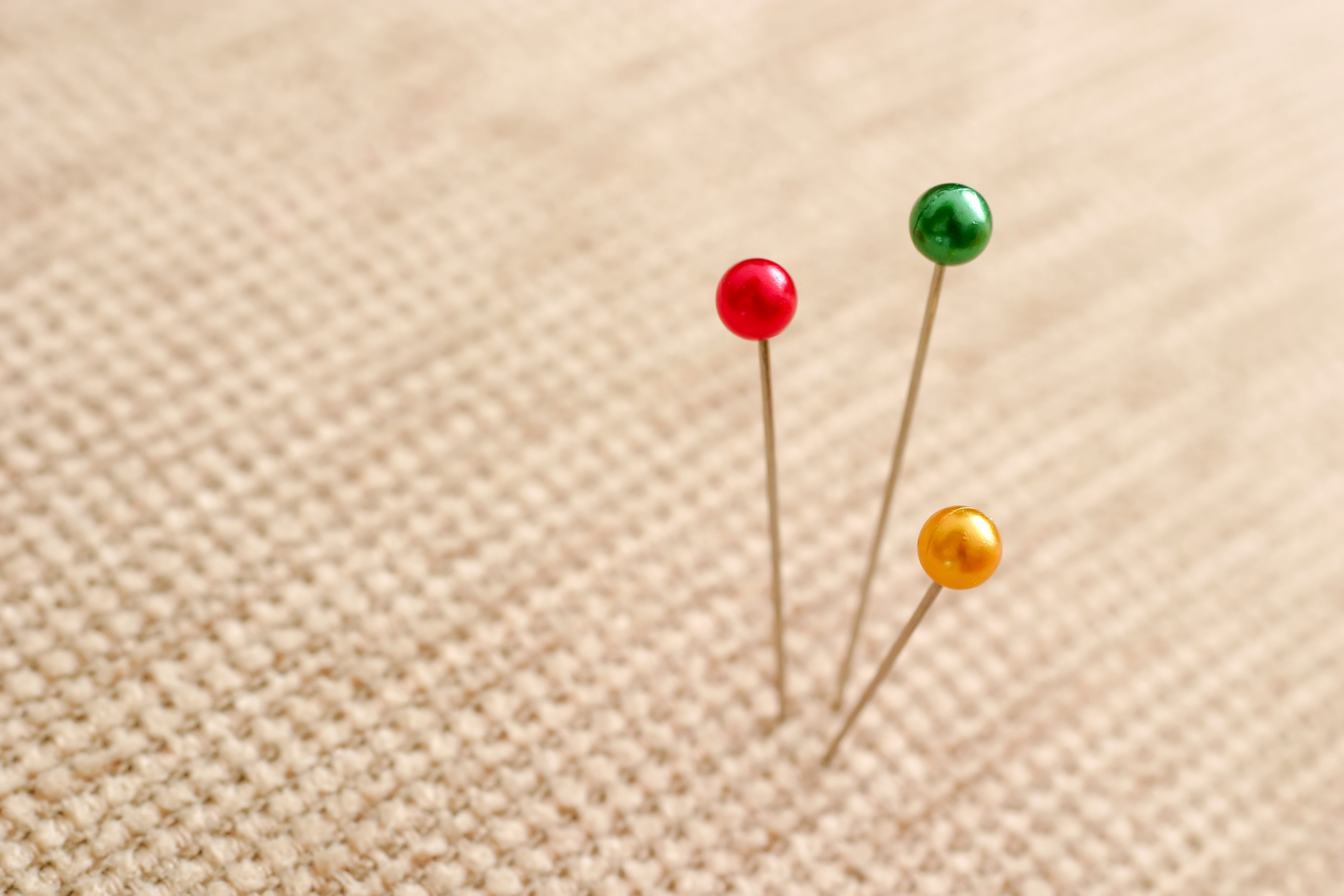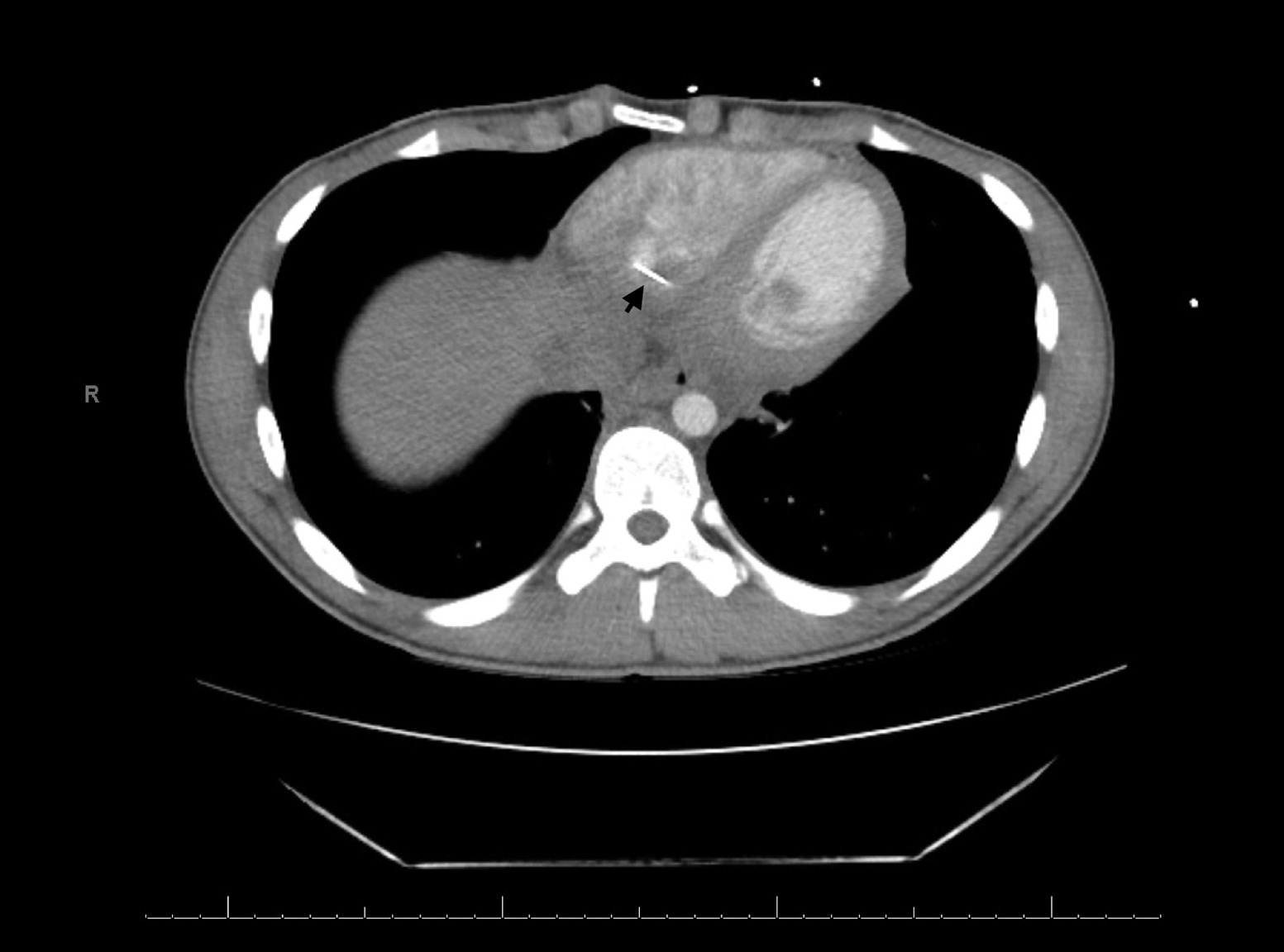A teen unknowingly swallowed a sewing pin. It pierced his heart.
A teen chest pain had a surprising cause — there was a sewing pin in his heart.

When a teen swallowed a small sewing pin while tailoring his clothes, he didn't even notice. So it was a surprise to everyone when, some days later, doctors found it in a very unusual place — his heart.
The 17-year-old went to the emergency room after experiencing chest pain for three days, according to a report of the case, published July 29 in The Journal of Emergency Medicine. The teen said the pain was sharp, radiated to his back and was worse when lying down or breathing deeply.
The results of an electrocardiogram (EKG), or a test of the heart's electrical activity, were abnormal, and doctors were concerned the patient had perimyocarditis, or inflammation of the heart muscle and the surrounding membrane. Lab tests also showed the teen had increased levels of proteins in his blood that can indicate heart injury.
A CT scan of his chest showed there was an "linear metallic foreign" object lodged in his heart, the report said. The object was about 1.4 inches (3.5 centimeters) long and was jutting out of the heart's right ventricle, or the lower right chamber of the heart that pumps blood to the lungs.
Related: 27 oddest medical cases

The teen initially told the doctors he hadn't ingested any foreign objects or experienced physical trauma to his chest. But in a later interview, he revealed that he tailors his clothes and sometimes holds sewing pins in his mouth. Still, he said he wasn't aware of ingesting a sewing pin.
He underwent open heart surgery to remove the object, which doctors found was indeed a sewing pin.
Sign up for the Live Science daily newsletter now
Get the world’s most fascinating discoveries delivered straight to your inbox.
Foreign bodies have been found in the heart before, but they are rare, especially in children and teens, the report said. In 2016, doctors in China reported the case of a 48-year-old woman who experienced a stroke after a needle pierced her chest and became stuck in her heart, Live Science previously reported.
The new case appears to be one of the first in which the patient unknowingly swallowed a needle that ended up in his heart.
Doctors believe the pin migrated directly from his stomach into his heart, although it may have migrated from another place along the gastrointestinal tract, such as from the esophagus or or small intestine, Dr. Bonnie Mathews, lead author of the new report and an assistant professor of pediatrics at UMass Memorial Medical Center in Worcester, Massachusetts, told Live Science.
The authors say their report may have implications for the treatment of sharp objects that are swallowed. Current guidelines say that sharp objects should be removed if they are causing symptoms, but there's less clarity on what to do when they are not causing symptoms.
Some doctors say that if a swallowed foreign body is small and not causing symptoms, it will likely pass through the gastrointestinal tract without complications, and so patients can be observed with repeated scans to see if they develop problems.
But the new case "highlights the potential devastating complications of foreign body ingestion," the authors wrote in the report. "Serious consideration should be given to the … removal of all ingested sharp, linear, gastric foreign bodies to prevent complications due to migration such as the one described in this case," they concluded.
Fortunately, the teen recovered after his surgery and "has had no complications to my knowledge," Mathews said.
Originally published on Live Science.

Rachael is a Live Science contributor, and was a former channel editor and senior writer for Live Science between 2010 and 2022. She has a master's degree in journalism from New York University's Science, Health and Environmental Reporting Program. She also holds a B.S. in molecular biology and an M.S. in biology from the University of California, San Diego. Her work has appeared in Scienceline, The Washington Post and Scientific American.










